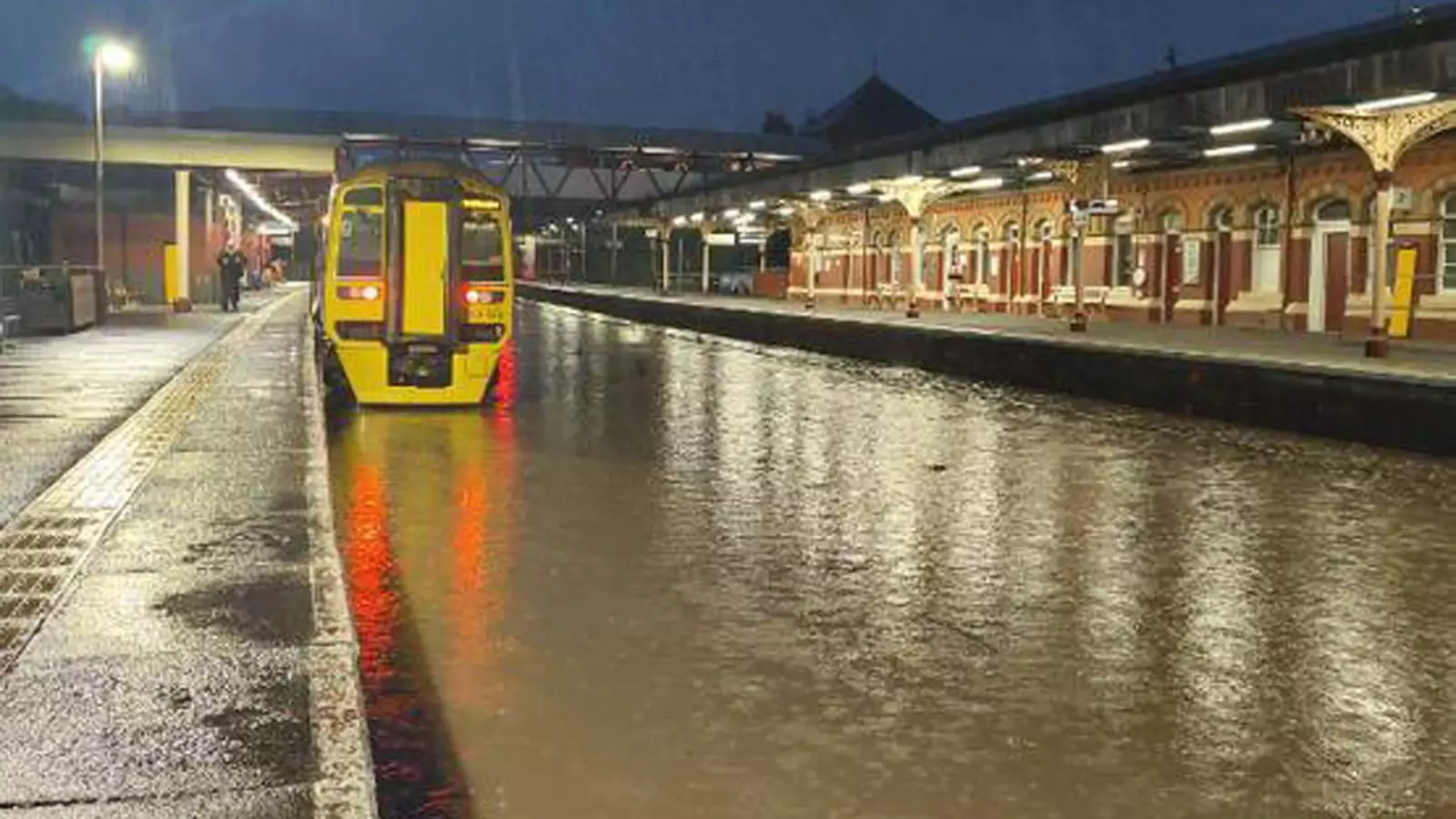In the wake of prolonged rainfall that has inundated many regions of England, more than 180 flood warnings and alerts are currently in effect. The Met Office has specifically indicated that the northern and central regions, as well as parts of Wales, have been significantly affected, leading to major disruptions in travel and daily life. The situation’s urgency has spurred an active response from various agencies, including the Environment Agency, which has issued a total of 66 flood warnings—indicating expected flooding—alongside 119 flood alerts suggesting that flooding may occur imminently.
The ramifications of this inundation extend beyond mere inconvenience; they represent a pressing environmental crisis exacerbated by climate conditions. Instances of flooding are not merely weather phenomena but symptomatology of larger systemic issues such as urban drainage inadequacies and climate change’s impact on rainfall patterns, highlighting a critical need for long-term infrastructural and policy reform.
The aftermath of this severe weather has seen substantial travel disruptions across numerous regions including Milton Keynes, Oxfordshire, and the West Midlands. Commuters have faced chaos as heavy rain leads to the cancellation of rail services, particularly between Shrewsbury and Wolverhampton, where severe flooding has made parts of the track impassable. Visually stark, social media images capture submerged railway tracks and abandoned vehicles along Gloucestershire’s motorways, underscoring the pervasive impact of these weather events.
Highways, being vital arteries for transportation, have also become dangerous obstacles. The M5 motorway, plagued by flooding, remains largely shut down, causing compounded frustration for travelers already burdened by countless delays and significant congestion. This situation emphasizes how intertwined our daily lives are with transportation infrastructure and how vulnerable these systems can be to natural events.
As those affected by the floods grapple with immediate dangers, communities have begun to mobilize in response. Local authorities such as Tewkesbury Borough Council have taken it upon themselves to distribute sandbags, a crucial protective measure against flooding for vulnerable homes. Additionally, non-league football clubs, like AFC Telford United, have made public appeals for assistance in clearing and repairing their waterlogged facilities. This reflects an admirable human spirit, as communities rally together during crises.
Emergency services in affected areas are working tirelessly to manage the aftermath of flooding, ensuring the safety of residents. Their commitment, however, becomes increasingly strained as disasters strike with greater frequency and severity. The demand for resources and manpower underscores the urgent need for improved disaster preparedness and infrastructural investment to withstand changing climatic realities.
The recent flood situation in England prompts an important conversation about the need for adaptive strategies in urban planning and emergency preparedness. Historical patterns show that flooding events are likely to become more intense and frequent due to climate change, necessitating proactive approaches rather than reactive ones. This includes investing in resilient infrastructure, improving water management systems, and enhancing community readiness for future weather-related crises.
As the Met Office predicts a shift toward drier conditions, with colder temperatures on the horizon, it is imperative for authorities to analyze the current crisis not merely as an isolated event but as a crucial opportunity to evaluate and improve the systems in place. By conducting post-event assessments and adjusting strategies accordingly, England can better prepare for the environmental challenges that lie ahead.
While recovering from the current flooding is paramount, it is equally essential to understand that this is a call to action. Communities, governments, and organizations must come together to advocate for and implement meaningful changes. Only then can the resilience of England’s infrastructure match the intensity of its weather challenges.


Leave a Reply